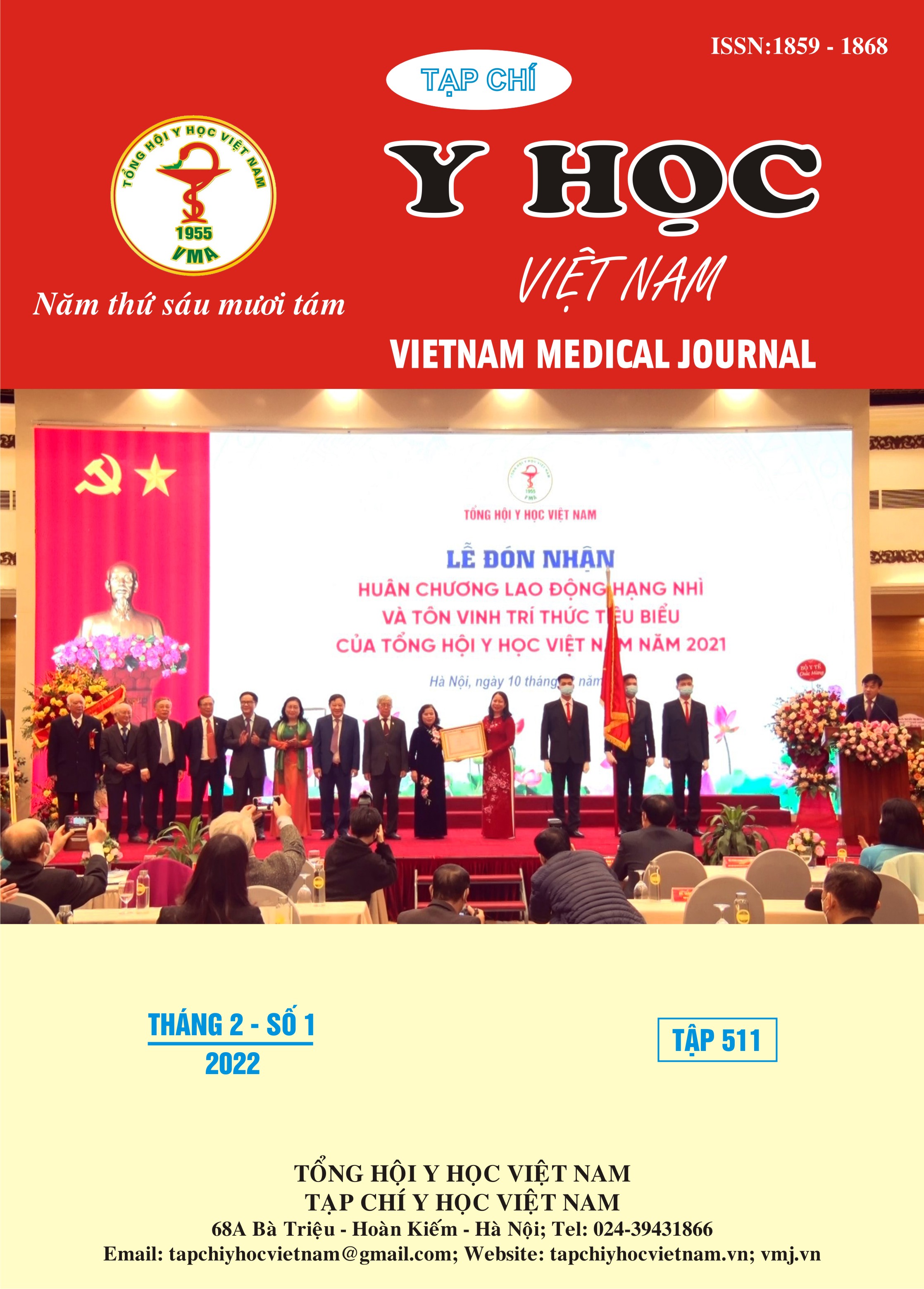ỨNG DỤNG KỸ THUẬT GIẢI TRÌNH TỰ GEN NGS KHẢO SÁT CÁC ĐA HÌNH NUCLEOTIDE TRÊN GEN F9
Nội dung chính của bài viết
Tóm tắt
Hemophilia B là bệnh lý rối loạn chảy máu có tính chất di truyền. Chẩn đoán người mang gen có vai trò quan trọng trong kiểm soát nguồn gen bệnh, hạn chế tỷ lệ mắc bệnh mới. Mục tiêu: (1) Khảo sát để xác định các đa hình nucleotide có tỷ lệ dị hợp tử cao làm cơ sở để chẩn đoán người mang gen bằng phương pháp phân tích liên kết. (2) Bước đầu đánh giá hiệu quả của bộ đa hình trong chẩn đoán người mang gen hemophilia B bằng phương pháp phân tích liên kết. Mẫu nghiên cứu: Máu ngoại vi từ 100 người phụ nữ khỏe mạnh đang tham gia hiến máu tại Viện Huyết học - Truyền máu TW (phục vụ mục tiêu khảo sát đa hình nucleotide); 20-30 người phụ nữ trong các gia đình bệnh nhân hemophilia B (phục vụ mục tiêu đánh giá hiệu quả bộ chỉ thị đa hình). Phương pháp: Giải trình tự gen F9 (35kb) của 100 người phụ nữ khỏe mạnh. Phân tích dữ liệu giải trình tự, lựa chọn các đa hình có tỷ lệ dị hợp tử cao. Phân tích mối liên kết giữa các đa hình. Thiết lập bộ chỉ thị đa hình có giá trị trong chẩn đoán Đánh giá hiệu quả bộ đa hình bằng cách khảo sát tỷ lệ dị hợp tử của bộ đa hình trên 23 người mang gen bệnh. Kết quả: (1) Chúng tôi đã khảo sát các đa hình nucleotide trên toàn bộ gen F9 và thiết lập được bộ chỉ thị đa hình có giá trị thông tin gồm 5 SNP: rs378815, rs3817939, rs4149670, c.89-1859 C>G, rs392959 với tỷ lệ dị hợp tử lần lượt là 41%, 43%, 29%, 48%, 47%. (2) Hiệu quả chẩn đoán của 5 SNP đạt 100% khi đánh giá trên 23 mẫu người mang gen.
Chi tiết bài viết
Tài liệu tham khảo
2. Mitchell, M., S. Keeney, and A.J.H. Goodeve, Practice guidelines for the molecular diagnosis of hemophilia B. 2010.
3. Goodeve, A., et al., A comparison of the allelic frequencies of ten DNA polymorphisms associated with factor VIII and factor IX genes in Thai and Western European populations. Blood coagulation & fibrinolysis: an international journal in haemostasis and thrombosis, 1994. 5(1): p. 29-35.
4. Mitchell, C., C. Mitchell, and A. Krause, New FACTOR IX linked marker alleles in African Haemophilia B patients. Haemophilia, 2007. 13(5): p. 642-644.
5. Shin, J.S., et al., Polymorphisms Linked to Factor IX Gene in Korean Population. Korean Journal of Obstetrics and Gynecology, 2000. 43(11): p. 2038-2044.
6. Kanani, P., et al., Heterozygote frequencies of common polymorphic markers of factor VIII (f8) and factor IX (f9) genes in indigenous Nepali population. Haemophilia, 2012. 18(2): p. e44-5.
7. Peyvandi, F. Carrier detection and prenatal diagnosis of hemophilia in developing countries. in Seminars in thrombosis and hemostasis. 2005. Copyright© 2005 by Thieme Medical Publishers, Inc., 333 Seventh Avenue, New ….
8. Graham, J., et al., The varying frequencies of five DNA polymorphisms of X-linked coagulant factor IX in eight ethnic groups. 1991. 49(3): p. 537.


